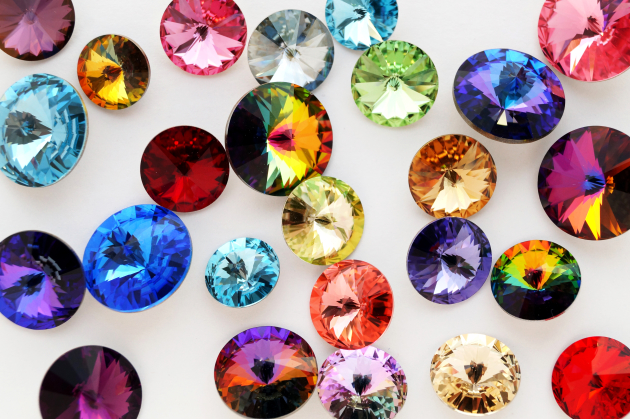If you weren’t able to get to the recent AGTA Gemfair in Tucson, here’s the next best thing: We caught up with Doug Hucker, Chief Executive Officer of the American Gem Trade Association, just as he got back from this whirlwind week of seminars and exhibits. He had a lot to share about trending gemstone jewelry, new consumer buying habits, and most importantly—what independent jewelers need to do to cash in on this hot, color-crazy gemstone market.
DPA: Today we’re seeing fine jewelry set with stones of every color of the rainbow; do you think this trend has staying power?
Doug Hucker: Absolutely. Fashion is driving it. Americans used to be a lot more conservative in their color palette, but over the last few years we’ve seen an explosion of color in everything—fashion, cars, electronics—and the jewelry industry has benefited from this, especially the colored gemstone industry.
DPA: Do you think people go out to shop for a particular stone—or do they shop for the colors they like?
DH: It used to be that they bought birthstones and that’s it, but color preferences are now driving the colored gemstone market. People like particular colors and buy particular colors.
DPA: Is there a best selling color?
DH: Blue is people’s favorite color gemstone. It’s the same year after year.
DPA: So are you talking about sapphires?
DH: With prices dramatically increasing in sapphires, as well as rubies and emeralds, smart jewelers will merchandise with colored gemstones in different price points. So as people shop for color, other blue options can include lesser known stones that have an impressive look such as tanzanite, iolite, and chrysocolla.
DPA: Are there more affordable ruby options?
DH: If you’re looking for a fine, exquisite red stone, the spinel is a good alternative. It looks like a ruby but costs about $1,000 to $3,000 per carat versus a ruby’s, $3,000 to $4,000 per carat. Though they don’t have the same intensity, red tourmalines, which run about $300 to $600 a carat, are another option for people who don’t want to spend on a ruby.
DPA: We’re seeing more colored stones in engagement rings; should jewelers be expanding their bridal inventory beyond diamonds?
DH: When it comes to bridal stones, the diamond is the sacred cow. It’s king and has been for many years and it will remain that way. But savvy jewelers should also be aware that younger people coming into the wedding market are looking for something out of the ordinary. They don’t want what their mothers or grandmothers had which is why you see colored stones popping up. Jewelers should provide this option.
DPA: Or risk losing a sale?
DH: Possibly. Customers may not know exactly what they want until you suggest a colored gemstone as more to their liking. Jewelers should also think beyond the engagement ring. Color is an important part of any wedding. It’s one of the themes that are established from the git-go, which provides jewelers an opportunity to suggest a colored gemstone piece of jewelry as a bridal party gift.
DPA: That’s a great idea. Any other tips to help jewelers in their gemstone marketing?
DH: Yes, here are three:
1) Synch your merchandise with the fashion trends. Savvy retailers are offering stones that work with fashion color palettes. For example, a few years ago we saw a big spike in Morganite requests. The stone was little known for years and then suddenly exploded because Pantone’s color of the year, Radiant Orchid, was driving sales. This year there are two Pantone colors, rose quartz and serenity blue, that will influence sales.
2) Know your stones. Consumers are doing their homework before they buy gemstones, and may come into your store armed with questions that you should be able to answer. As a jeweler, you and your staff should be prepared with a 15 to 30 second “elevator speech” about the key qualities of each stone in your inventory.
3) Be able to produce a lab report. More shoppers are asking for them because before investing in that beautiful blue sapphire or Paraiba tourmaline, for example, they want to know exactly what they’re buying. The third party documentation will tell them whether the sapphire is treated or untreated; the rarer, untreated stone will justify a heftier price tag. And a lab report will tell you the origin of the Paraiba tourmaline—Brazil or Mozambique. The one from Brazil will cost more, even if it’s the same color. Similarly a ruby from Burma will be higher in price than a ruby from East Africa.


